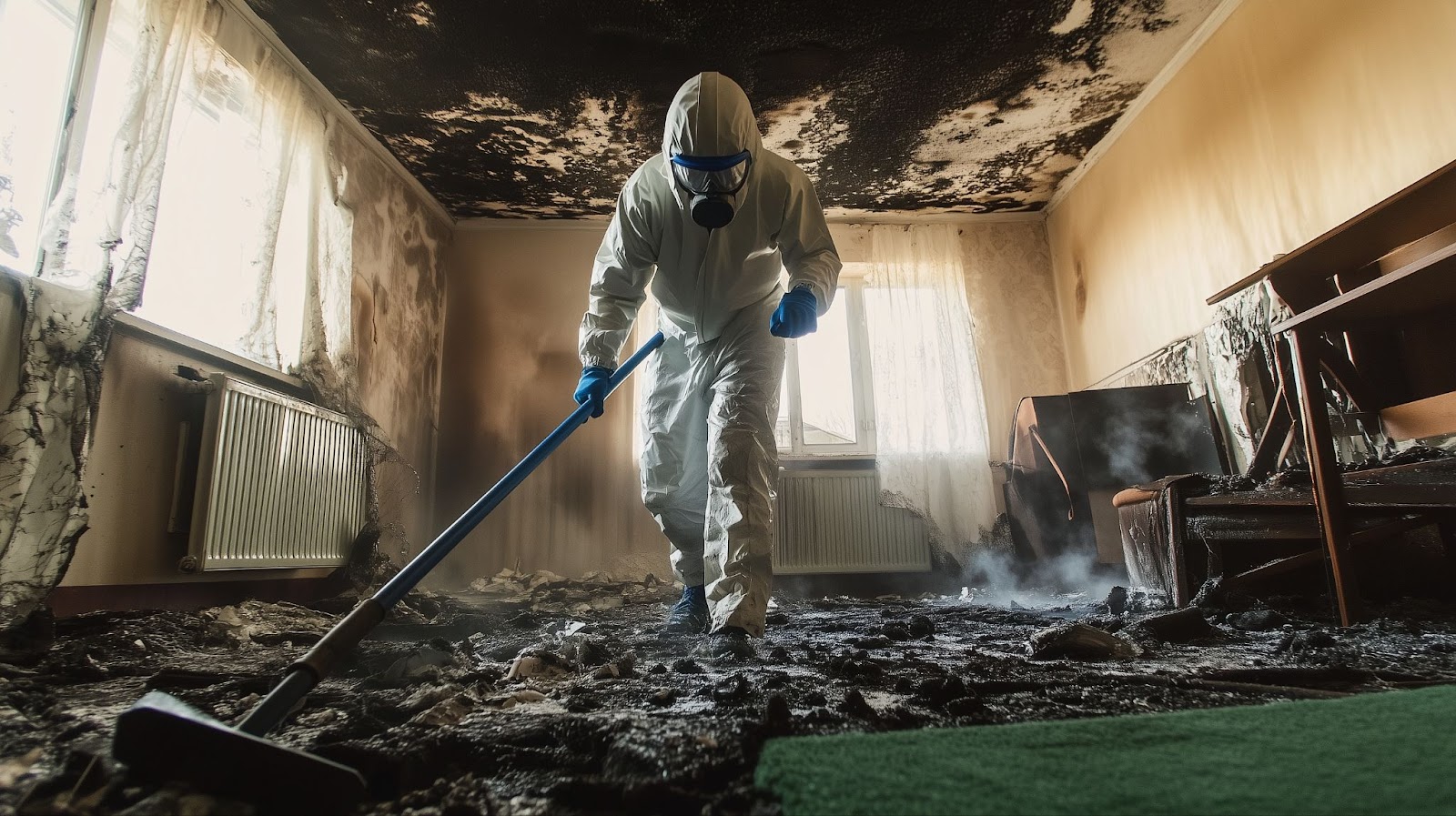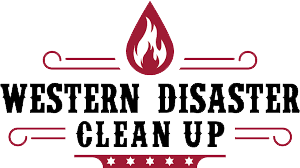Imagine returning home after a devastating fire, only to find that water damage after a fire has caused even more destruction. This scenario is heart-wrenching and overwhelming, but it’s important to remember that restoration is possible. Understanding the steps to take will help you regain control in a chaotic situation.
Water fire damage restoration isn’t only about fixing physical damage; it’s also about healing your home and your spirit. Every step you take helps ensure your home becomes a safe and welcoming space once more. A water damage emergency may feel insurmountable, but you can navigate these testing challenges with the right approach.
This article will outline the critical steps to restore your house after experiencing water damage after a fire. From ensuring safety to assessing structural repairs, each action will set you on the path toward reclaiming your home. Let’s explore how to turn the tide on water damage and help you return your home to its former glory.
1. Ensure safety first
You’ll need to take several steps when dealing with water damage after a fire. For starters, you’ll want to turn off the power to prevent electrocution. You’ll want to wear protective gear, including gloves, masks, and boots, to protect yourself from harmful contaminants that may be present in the water or created by the fire’s byproducts.
Next, you’ll check for structural damage. You should take this step before you even enter your home since structural damage may make certain areas unsafe.
Another important step here is avoiding additional damage. Don’t use appliances or systems until they have been checked by a professional to prevent further damage or health risks. If you smell gas or suspect a leak, leave the area immediately and call your gas company.
Finally, contact your insurance company to start the claims process. Your insurance agent will advise you on how to proceed and what documents you need. We’ll cover this more in step three.
Following these steps right after a fire will prioritize safety, which is critical to the water fire damage restoration process.

2. Document the damage
When faced with water damage after a fire, carefully document all the damage before attempting any restoration work. Detailed documentation helps insurance companies and will often speed up the claims process.
First and foremost, ensure it’s safe to enter your home. Once you’ve got the green light, take clear pictures or videos of all the affected areas and capture the water fire damage in detail. Focus on structural damage, damaged walls, mold growth, soot, smoke damage, and any damaged personal items like furniture and electronics.
Use a notepad or digital device to list all water-damaged items, noting the extent of the damage for each one. If possible, gather any receipts or previous purchase records for the items.
If you have any pre-damage photos or videos of your home, gather these as well. They will help show the insurance company the extent of the damage.
Remember to be thorough and methodical. Comprehensive documentation is vital to supporting your insurance claims and contributing to the success of the water and fire damage restoration process.
3. Contact your insurance company
When water damage after a fire hits your home, you must contact your insurance company immediately.
First, you need to file a claim to cover the costs of water fire damage restoration and any additional damage that the fire caused. Your insurance policy might cover the extent of damage, but this varies.
Here’s a simple list to make this step easy:
- Call your insurance company as soon as you can.
- Talk to your insurance agent and tell them about the water damage emergency.
- Be ready to explain what happened and the damage, including water, soot, and smoke damage.
- Ask about your policy details, like what coverage you have for damage restoration services.
- Find out if they can suggest any trusted damage restoration companies.
- Ask about the claims process and what you will need to do.
Talking to your insurance provider gives you peace of mind and helps you understand what’s next. Remember, the sooner you start, the quicker you’ll get help and keep mold growth and health risks from becoming a big problem.
4. Remove standing water
Next, you need to remove standing water from your home and do it fast. Use a wet-dry vacuum or a submersible pump to remove the water effectively. If you do not already own these tools, they’re available to rent from local hardware stores.
Once you’ve removed the majority of the water, mop, and blot the affected areas to soak up any remaining moisture.
Professional water removal services may be necessary for more extensive or more severe flooding situations. These services use more powerful equipment and techniques to dry your home thoroughly and safely. Acting quickly will help minimize the damage, making the recovery process smoother and more manageable.
5. Dry out your home
After removing the water, fans and dehumidifiers start the drying process. This step helps prevent additional damage to walls, floors, and furniture.
Here’s a simple list of actions to dry out your home:
- Open windows and doors. Let fresh air circulate to speed up drying.
- Use dehumidifiers. These machines pull excess water from the air.
- Set up fans. Fans, such as air movers, help move the air around, pushing moisture out.
- Remove wet items. Take out furniture, carpets, and other items that trap moisture.
- Keep track of progress. Check for dryness daily to monitor the extent of damage reduction.
Remember, the goal is to dry your home for safety, not merely for comfort. Drying reduces health risks from damp environments. If there’s more water or moisture than you can dry out on your own, call a damage restoration company to help with your water fire damage restoration. They will ensure your home returns to a safe and welcoming space.

6. Clean and sanitize
Cleaning and sanitizing your home after water damage from a fire is a necessary step in restoration. Here’s what you need to know:
- Remove soot and debris. Before sanitizing, clear away any soot, ash, or debris that the fire left behind.
- Use protective gear. Always wear gloves, masks, and protective clothing to avoid contact with harmful contaminants.
- Choose appropriate cleaners. Use cleaners designed to handle soot and smoke damage. Non-toxic options are best for safety and the environment.
- Clean thoroughly. Scrub all surfaces with the cleaning solution, including walls, floors, and ceilings. Don’t forget hidden areas where mold could grow.
- Disinfect. After cleaning, apply a disinfectant to prevent mold and bacterial growth.
- Ventilate. Keep the area well-ventilated during and after the process to help dry and reduce fumes.
Remember, for electrical items or extensive damage, it’s best to consult with professional restoration companies to ensure that your home is safely restored to its pre-damage state.
7. Assess and repair structural damage
When your home suffers from water damage after a fire, it’s critical to assess and repair any structural damage. Here are the key steps to take.
Inspection
Call in a professional to thoroughly inspect the property for any damage to walls, foundations, and support beams.
Evaluation
The inspector will determine the extent of damage and the need for structural repairs to ensure safety.
Clearing debris
Remove any destroyed materials, such as charred wood or crumbled drywall, to clear the space for repair work.
Support
You might need temporary support if the structure is weakened to prevent additional damage.
Restoration
A damage restoration company will begin the restoration process, restoring damaged sections of your home to their former state.
Quality check
After repairs, double-check everything to ensure stability and no further risk of collapse or degradation.
Prevention
Once repairs are done, consider additional measures to strengthen the structure against natural disasters.
Remember, time is of the essence. Delaying these steps may lead to more problems, like mold growth.
8. Restore and rebuild
When all the cleaning and drying are complete, it’s time to restore and rebuild.
This is when you return your home to how it was before the fire and water damage. You might need to fix or replace parts of the floor, walls, or electrical systems if they have been damaged. Sometimes, whole rooms need to be rebuilt, especially if there is structural damage.
Working with skilled professionals is important. They will help make sure everything is built strongly and safely.
Remember, the goal is to fix the damage and prevent things like mold growth from happening in the future. Some people even take the chance to upgrade parts of their homes to make them better than before. In the end, you want your home to be a place where you feel happy and healthy again.
Restore your home with Western Disaster Cleanup
If you’re facing the daunting task of recovering from water, fire, or mold damage in your home, you don’t have to go through it alone. Western Disaster Cleanup is here to provide expert support and restoration services. Our team is equipped with the knowledge, tools, and experience to handle every aspect of the restoration process efficiently and effectively.
Trust us to restore your home to its pre-damage condition with care and precision. Call Western Disaster Cleanup today, and let us help you begin the journey back to a safe and comfortable home environment.

